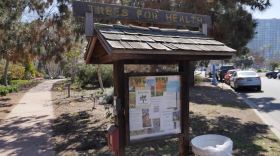The Centers for Disease Control and Prevention (CDC) and San Diego County are working together to survey Tijuana River Valley residents for three days beginning on Thursday. They’re visiting 210 homes to ask how living near cross-border sewage pollution has affected their lives.
Dr. Ankita Kadakia, the County’s interim public health officer, said that includes the physical and mental health of all members of a household.
"Some households might have young children that are attending the school system," she said. "They might be affected in a different way by the sewage crisis versus other households that might have elderly or vulnerable individuals."
The County already collects data on gastrointestinal and respiratory illnesses from emergency rooms in the area.
"We were hearing reports of individuals with various symptoms that may not necessarily be coming into the emergency room," Kadakia said. "We wanted to make sure that we could capture that."
They’re also asking how community members would like to receive updates on the sewage crisis.
The group conducting the survey includes more than 30 CDC staff members. San Diego State University School of Public Health students and UC San Diego preventative medicine students are also knocking on doors.
Capt. Fuyuen Yip, with the CDC’s National Center for Environmental Health, said CDC experts helped the County develop the survey and identify neighborhoods to visit.
"The random selection process will allow us to get kind of a cross-section, a diverse section, of feedback directly from the communities," she said.
The County requested help from the CDC in May. Yip said a final report will be ready in three to six months. The County said the results will help shape its response.
"This is really a way to get scientifically validated information. We need data to make those decisions," Kadakia said. "This is a step for us to have data to say, 'Hey, look, this really needs to be fixed and we need the money. We need the dollars put into this infrastructure.'"
Kadakia said the CDC’s Agency of Toxic Substances and Disease Registry will also survey people who work in or near the ocean — like lifeguards, fishermen and coastal business owners — about their experiences with contaminated water. That survey will start this weekend.






